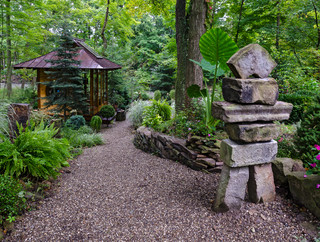Think about planting your seeds in indoor pots and then transplanting them to your garden once they become seedlings. This insures that the plants will grow and thrive into adulthood. In addition, it lets you tighten the time in between plantings. After you remove the mature plants from your garden, you can immediately replace them with the seedlings and start the cycle over again.
Turn the handles of tools you have on hand into rulers to make measurements in your garden. You can convert any large handle tool, such as a hoe, shovel, or rake into a measuring tool. Lay the handles of said tools on the ground where it is flat and there is no interference, such as gravel, and stretch a measuring tape along one side. Label the distances with a permanent marker. You will never find yourself looking for a ruler thanks to this simple tip.
When gardening, be watchful of stink bugs, particularly in the fall. Fruits, peppers and tomatoes are among the foods they love to eat. If not managed well, they can wreak havoc on your garden.
If you're like many gardeners, autumn means that it's time to get some delicious fall edibles growing in your garden. Instead of a clay pot, show some fall spirit by using a hollow pumpkin to plant your lettuce or kale in. Hollow out the pumpkin and spray with Wilt-Pruf to prevent rot. You can now use it to plant in, as you would a pot.
When you are mowing your lawn do not cut it too closely to the dirt. If you leave a bit more height, the grass roots will get deeper, making your lawn stronger. Grass that is shorter has a root system that is easier to dry out.
Separate irises. Take clumps that have become overgrown and divvy them up into separate plants. After foliage is no longer alive, remove the flowers with bulbs. The bulbs, when harvested, should easily split by hand - allowing you to replant them for even more blooms next spring. Rhizomes, however, need to be divided by using a gardening knife. Get rid of the center and keep the new pieces you cut from the outside. Each piece needs one strong offshoot. Replant them immediately.
Plant ever-bearing strawberries for your children in the organic garden. Your children will enjoy being able to pick strawberries and will be ready to help you if they can get something sweet to eat.
Just as when outside, plants kept inside need varying degrees of sunlight, which can be harder to obtain from indoors. If you want indoor plants, choose specimens that can grow in relatively dark places. If you want to grow plants that need a lot of light, consider using artificial lighting.
Cover your flower beds with two or three inches of compost or organic mulch. This practice is an easy way to discourage weeds, retain moisture, and add valuable nutrients to your garden. This also gives your flower beds a more aesthetic aspect.
To avoid tracking the mud and dirt that will get on your gardening shoes, use plastic bags. This allows you to keep going, getting back to your garden quickly.
Increase the value of your property! Landscaping your yard will bring you a big return on your investment. A simple investment in plants can elevate your property value by as much as 20% or more. Look for hardy, low moisture plants that are naturally suited for your region.
A good general rule when planting your seeds into containers is that the depth of the planting should be about three times the size of the seed. But, is important to realize the some seeds ought not be covered, as they need complete exposure to sun. Petunia and ageratum seeds need direct sunlight, for example. The directions for how to handle the seeds will usually be found on the seed's package. You can also find this information online.
Now you know more about organic gardening. Awesome! The tips above will help you to improve your organic garden. Now, you can apply this new information to make your organic garden function better and become a more enjoyable endeavor.

No comments:
Post a Comment